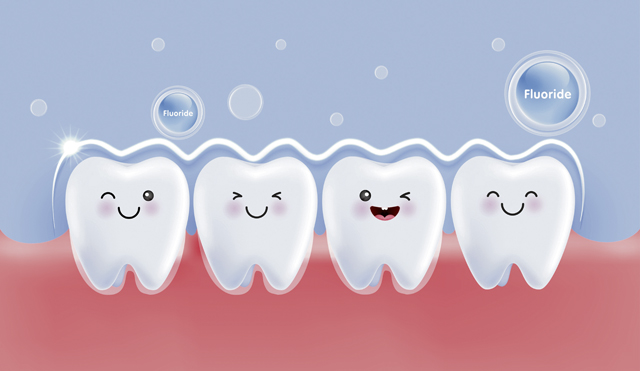
1. What is Fluoride?
Fluoride is a mineral found in many foods and water. When applied to surfaces of the teeth, it strengthens teeth and reduces risk of forming decays.
2. How does Fluoride work?
Sugary foods with bacteria attack the enamel (the outer layer of teeth), which degrades the minerals and structure of the enamel and the inner layers of the tooth. This degradation of teeth structures can be slowed by consuming minerals such as fluoride, calcium, and phosphate in one’s diet.
Fluoride makes enamel more tough to acid attacks and slows down the process of teeth demineralization. Fluoride has also been found to reverse early tooth decay.
3. Where can I get Fluoride?
a. Fluoridated water
Fluoride naturally exists in water sources like lakes, rivers, and oceans.
The U.S. discovered the benefits of fluoride in tooth decay prevention in the 1940s. Grand Rapids, Michigan became the first city in the world to add fluoride to its tap water system in 1945. Today, most states have fluoride in their tap water with the concentration of 0.7 milligrams per liter according to the U.S. Department of Health and Human Services.
b. Food
Fluoride can also be found in various foods such as brewed black tea and coffee, oatmeal, raisins, potatoes, yogurt and mayonnaise.
c. Fluoride toothpaste
Another common source of fluoride is toothpaste.
4. What happens if you consume too much fluoride?
For children who are younger than 8 years old, consuming excessive fluoride can cause enamel defects, called fluorosis. Fluorosis usually appears as tiny white or brown spots on the enamel’s surface. Sometimes, it can appear as pitting on enamel surface. A toxic dose of fluoride can occur with approximately 5 milligrams of fluoride per kilogram, with a lethal dose occurring with 15 milligrams of fluoride per kilogram.
5. Summary
Since tap water in Europe is not fluoridated. It is important to get fluoride from other sources, especially for children. According to the American Academy of Pediatrics, American Academy of Pediatric Dentistry, and American Dental Association, fluoridated toothpaste is recommended for all children.
It is advised to start using toothpaste as early as the eruption of the first tooth. For children who are younger than 3 years old, brush twice a day with a smear layer, about the size of a grain of rice, of toothpaste. For children who are from 3 to 6 years old, brush twice a day with a pea-size amount of toothpaste.


